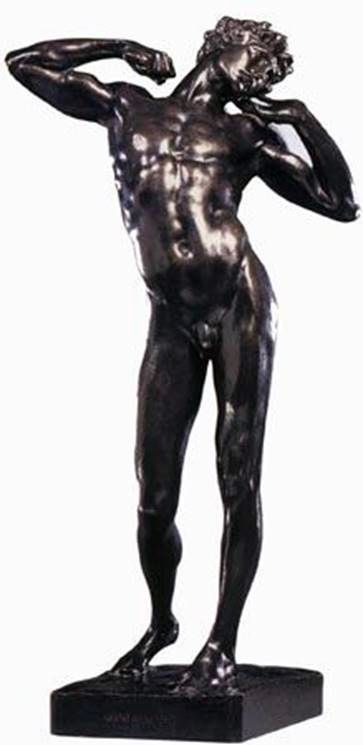
Leighton began experimenting with sculpture when he came up with the use of “auxiliary” clay models when working on multi-figured canvases. These models, as we remember, helped the artist to determine the poses of the characters of the future picture, to clarify the direction of the folds of clothes – in a word, they performed the “unskilled” function.
Having completed the work on a full-scale composition etude, Leighton usually threw out most of the models, but with some he made plaster casts, which he kept in his workshop. Later, the master created three sculptures, in bronze – one of them was called “Lazy”, 1882-85.
The most successful, in the general opinion, to Leighton is the sculpture “The Athlete Fighting Python”. She received a lot of praise at the exhibition of the Royal Academy in 1877. The basis of Leyton took the popular ancient Greek myth, which tells about the Trojan soothsayer Laocoon strangled by snakes. The “Athlete” was immediately announced as a new step in English sculpture, which at that time was experiencing a period of profound decline.
Against the background of inexpressive park statues and portrait busts coming out from under the sculptor of British sculptors, the “Athlete” did indeed look advantageous. This powerful, naturalistic work brought the artist the gold medal of the 1878 Paris Exhibition.
 Elisha, the resurrection of the Sunniman’s son by Frederick Leighton
Elisha, the resurrection of the Sunniman’s son by Frederick Leighton Bummer – Frederick Leighton
Bummer – Frederick Leighton The Garden of the Hesperides by Frederick Leighton
The Garden of the Hesperides by Frederick Leighton Nude Breed by Frederick Leighton
Nude Breed by Frederick Leighton War Industry by Frederick Leighton
War Industry by Frederick Leighton Flaming June by Frederick Leighton
Flaming June by Frederick Leighton Music Lesson by Frederick Leighton
Music Lesson by Frederick Leighton Study for the composition “Dance” by Frederick Leighton
Study for the composition “Dance” by Frederick Leighton